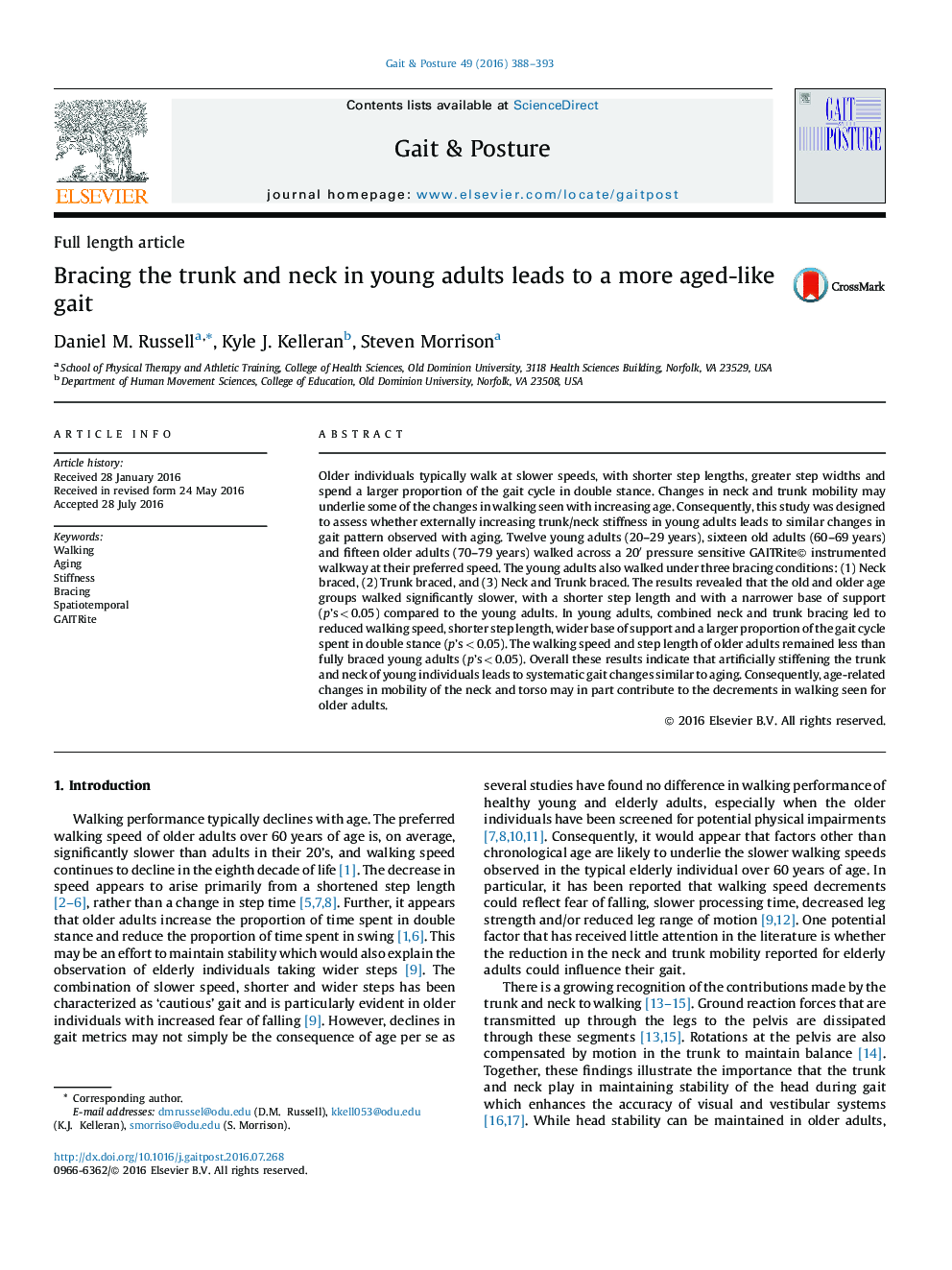| کد مقاله | کد نشریه | سال انتشار | مقاله انگلیسی | نسخه تمام متن |
|---|---|---|---|---|
| 6205505 | 1603846 | 2016 | 6 صفحه PDF | دانلود رایگان |
- Differences in spatiotemporal gait measures were assessed as a function of age.
- Declines in walking speed and step length were seen with increasing age.
- Differences in gait were greatest for adults aged 70-79 years of age.
- Bracing the neck and trunk of younger adults led to changes similar to aging.
Older individuals typically walk at slower speeds, with shorter step lengths, greater step widths and spend a larger proportion of the gait cycle in double stance. Changes in neck and trunk mobility may underlie some of the changes in walking seen with increasing age. Consequently, this study was designed to assess whether externally increasing trunk/neck stiffness in young adults leads to similar changes in gait pattern observed with aging. Twelve young adults (20-29 years), sixteen old adults (60-69 years) and fifteen older adults (70-79 years) walked across a 20â² pressure sensitive GAITRite© instrumented walkway at their preferred speed. The young adults also walked under three bracing conditions: (1) Neck braced, (2) Trunk braced, and (3) Neck and Trunk braced. The results revealed that the old and older age groups walked significantly slower, with a shorter step length and with a narrower base of support (p's < 0.05) compared to the young adults. In young adults, combined neck and trunk bracing led to reduced walking speed, shorter step length, wider base of support and a larger proportion of the gait cycle spent in double stance (p's < 0.05). The walking speed and step length of older adults remained less than fully braced young adults (p's < 0.05). Overall these results indicate that artificially stiffening the trunk and neck of young individuals leads to systematic gait changes similar to aging. Consequently, age-related changes in mobility of the neck and torso may in part contribute to the decrements in walking seen for older adults.
Journal: Gait & Posture - Volume 49, September 2016, Pages 388-393
